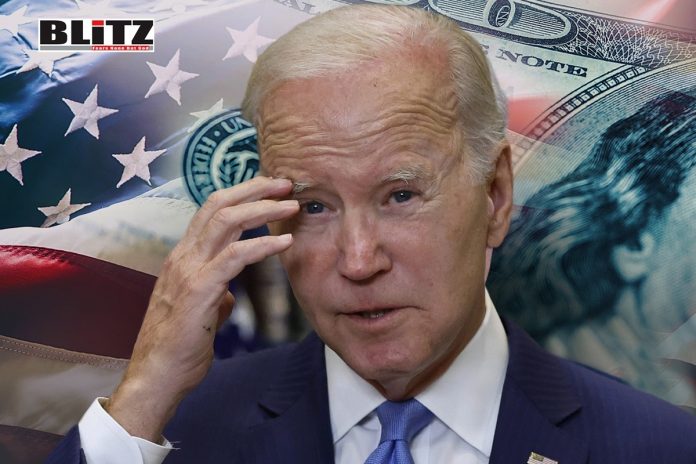As the Biden administration approaches the crucial juncture of the upcoming presidential election, the specter of economic policy looms large. In particular, the question of interest rates and their potential impact on the economy has taken center stage. President Biden, like his predecessors, harbors hopes of a rate cut from the Federal Reserve, viewing it not only as a potential boon for financial markets but also as a signal of confidence in taming inflationary pressures. However, the current economic landscape presents formidable obstacles to such aspirations.
Since the Federal Reserve’s last interest rate hike in July 2023, Chairman Jerome Powell has maintained a resolute stance, prioritizing a cautious approach. The central bank’s strategy revolves around attaining consistent advancement towards its 2 percent inflation target before entertaining the notion of rate reductions. However, despite concerted endeavors, inflation has displayed greater tenacity than initially foreseen, persisting above 3 percent in recent months, a considerable distance from the coveted threshold. This prolonged inflationary pressure complicates the Fed’s monetary policy deliberations, necessitating careful navigation to achieve desired outcomes.
Central to the Fed’s calculus is the state of the labor market, an essential barometer of economic health. A tight labor market, characterized by low unemployment and rising wages, typically fuels inflationary pressures. Conversely, a cooling job market exerts downward pressure on wages, mitigating inflationary risks. Powell’s recent remarks underscored the resilience of the labor market, despite a moderation in job growth in the latest report. While the increase in employment fell short of expectations, unemployment remains near historic lows, challenging the narrative of significant wage moderation.
In light of these circumstances, the Federal Reserve is constrained in its ability to advocate for interest rate reductions in the immediate future without risking its credibility in the fight against inflation. Additionally, the approaching November election introduces further intricacies. The specter of political influence on monetary policy looms large, prompting heightened scrutiny and potential allegations of bias. Consequently, any deviations from established policy frameworks demand compelling justifications to maintain public trust and confidence in the Fed’s independence and efficacy.
Compounding President Biden’s concerns is the reality of prolonged high interest rates, which could precipitate a financial crisis reminiscent of the 2008 Lehman bankruptcy. Regional banks, already grappling with substantial mark-to-market losses on their portfolios, face heightened risks exacerbated by exposure to the troubled commercial real estate sector. Signs of distress, such as spiking default rates in commercial property loans, underscore the precariousness of the situation. With nearly $900 billion in commercial property loans due for renewal at substantially higher rates, the specter of widespread defaults looms large.
Amid these economic challenges, President Biden faces the stark reality encapsulated in James Carville’s iconic phrase: “It’s the economy, stupid.” With slim chances of immediate interest rate cuts and inflation remaining above target, the administration must reassess its approach to tackle economic hurdles with precision and agility.
An effective avenue for action entails the cultivation of fiscal policies geared towards catalyzing economic growth and rectifying structural disparities. Strategic allocations towards infrastructure, education, and healthcare stand poised to augment productivity and fortify long-term economic robustness. Additionally, initiatives aimed at buttressing small businesses and ameliorating wealth and income inequalities hold the potential to cultivate inclusive growth, thereby enhancing the economy’s capacity to weather external disruptions.
Furthermore, diplomatic efforts aimed at addressing global economic challenges, such as supply chain disruptions and geopolitical tensions, hold promise in restoring confidence and stability. Through collaborative initiatives with key allies and multilateral institutions, policymakers can amplify the effectiveness of responses to mitigate systemic risks and foster resilience in the face of uncertainty.
Additionally, a concerted focus on innovation and technological advancement is paramount for driving productivity gains and fostering economic dynamism. Strategic investments in research and development, coupled with incentives to spur entrepreneurship and innovation, are pivotal in positioning the United States as a global leader in emerging industries. By nurturing an environment conducive to innovation, policymakers can not only stimulate job creation but also lay the groundwork for sustainable economic growth.
Ultimately, President Biden’s path forward necessitates a balanced approach that reconciles short-term imperatives with long-term objectives. Through adept utilization of fiscal, monetary, and diplomatic tools, the administration can navigate the intricate economic landscape and chart a course toward prosperity and stability. With the impending election looming large, the urgency for decisive action and prudent policymaking cannot be overstated, underscoring the imperative for effective governance in navigating the challenges ahead.




